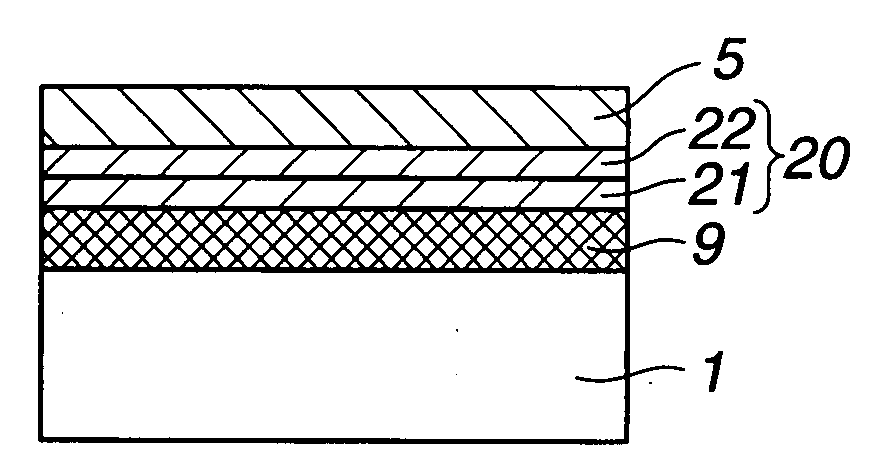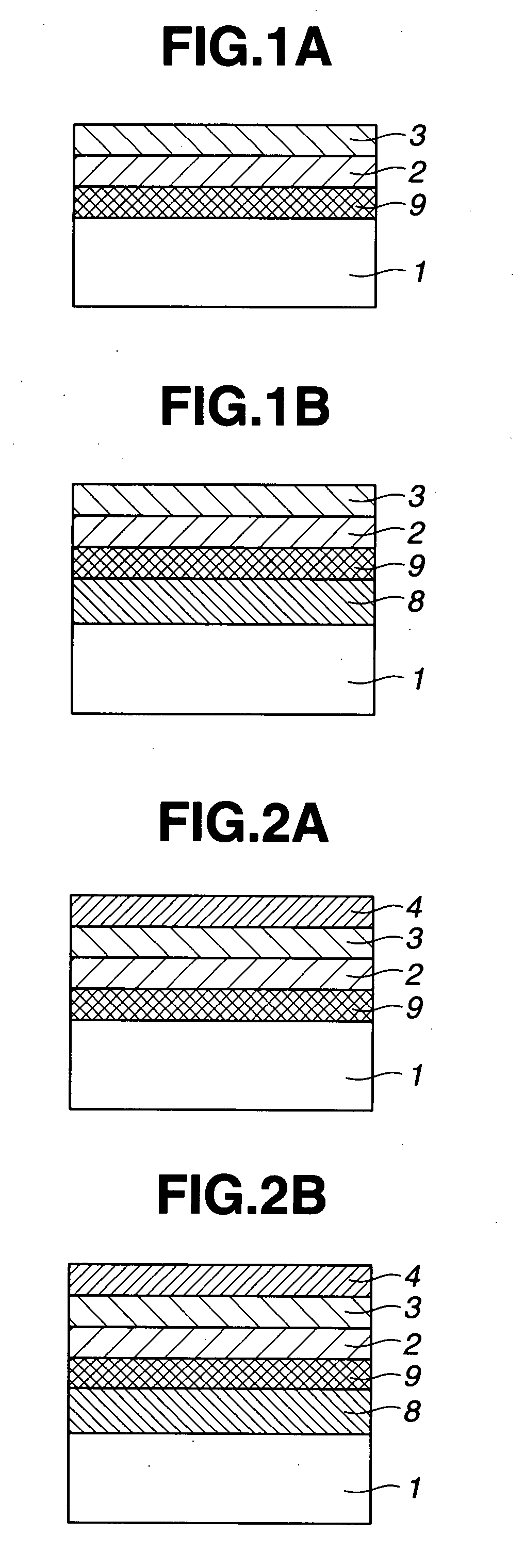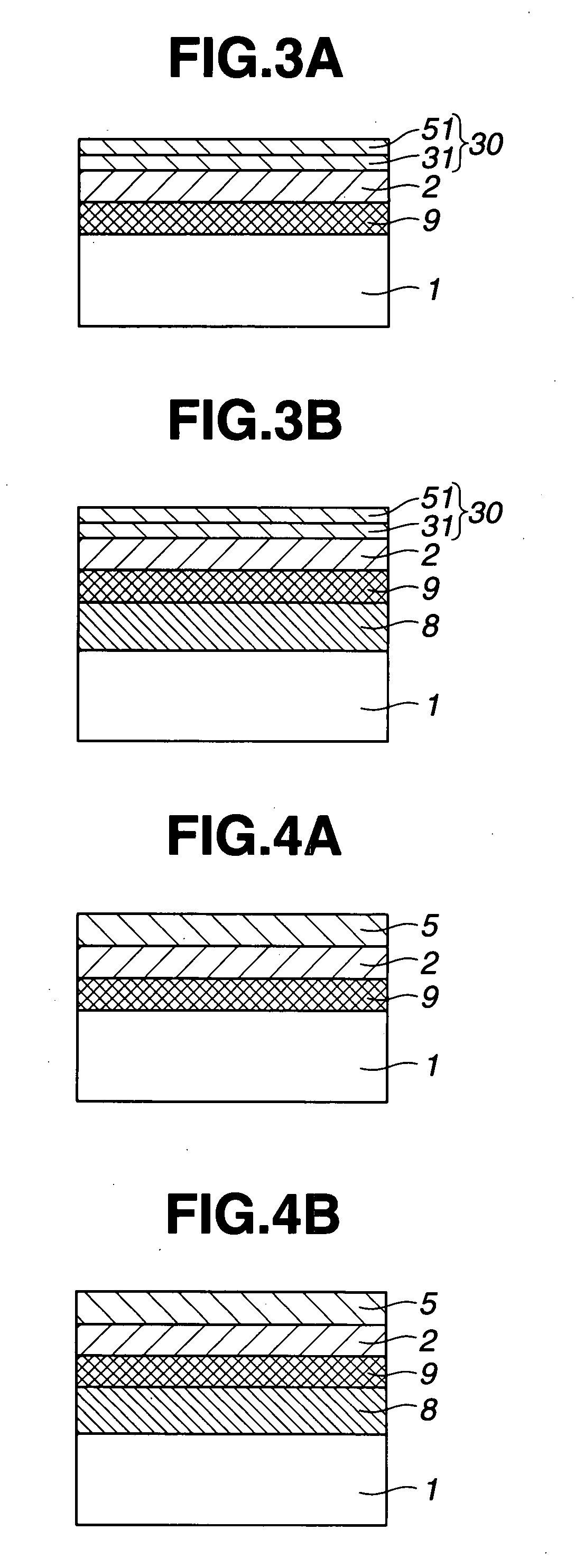Photomask blank and photomask
a technology of photomask and photomask, which is applied in the field of photomask blank and photomask, can solve the problems of preventing effective pattern transfer, degrading resist pattern profile, and increasing demand for circuit pattern miniaturization, and achieves phase control, high accuracy, and reduced pattern density dependency
- Summary
- Abstract
- Description
- Claims
- Application Information
AI Technical Summary
Benefits of technology
Problems solved by technology
Method used
Image
Examples
example
[0178]Experiments and Examples are given below for further illustrating the invention although the invention is not limited thereto.
[0179]In Examples, fluorine dry etching was performed by feeding only C2F6 gas into a chamber at a flow rate of 20 sccm, and setting a pressure of 2 Pa in the chamber. Chlorine dry etching is performed by feeding chlorine gas at a flow rate of 20 sccm, oxygen gas at 20 sccm and helium gas at 80 sccm into a chamber, and setting a pressure of 2 Pa in the chamber.
experiment 1
[0180]By selecting one of targets containing molybdenum and silicon in an atomic ratio of 0:100, 1:15, 1:9, 1:4, 1:2, and 1:1 and sputtering the target in an argon atmosphere, a molybdenum silicide film of 39 nm thick was deposited (the film having a molybdenum / silicon ratio corresponding to the selected target). The molybdenum silicide films were immersed in aqueous ammonia / hydrogen peroxide (aqueous ammonia:hydrogen peroxide:water=1:1:30 in volume ratio) for one hour, after which a change of film thickness was determined. The film thickness losses were 0.2, 0.2, 0.7, 1.5, 17.7, and 39 nm, respectively. The films were also measured for electric conductivity using a four-probe sheet resistance meter MCP-T600 (Mitsubishi Chemical Co., Ltd.), finding conductivity values of 1082, 680, 486, 296, 96, and 38 ohm / square (Ω / □), respectively.
[0181]With regard to these materials for light-shielding film and antireflective film (ARF), it was found that when the ratio of transition metal to sil...
example 1
[0182]A photomask blank having the layer arrangement shown in FIG. 1A was prepared by depositing the films by sputtering. The respective films are as follows.[0183]Transparent substrate: quartz substrate[0184]Etch stop film: CrN (Cr:N=9:1 in atomic ratio, thickness 10 nm)[0185]Light-shielding film: MoSi (Mo:Si=1:4 in atomic ratio, thickness 41 nm)[0186]ARF: MoSiN (thickness-wise compositional grading from Mo:Si:N=1:3:1.5 in atomic ratio on light-shielding film side to Mo:Si:N=1:5:5 in atomic ratio on side remote from transparent substrate (surface side), thickness 18 nm)
[0187]This photomask blank was processed in accordance with photomask manufacturing process A, whereby a Levenson mask was produced. For the first and second resist films, a chemically amplified negative resist mainly comprising a hydroxystyrene resin, a crosslinker, and a photoacid generator was used to form a resist film of 250 nm thick. The resist films were patterned by EB lithography. Before formation of the fir...
PUM
| Property | Measurement | Unit |
|---|---|---|
| thickness | aaaaa | aaaaa |
| thickness | aaaaa | aaaaa |
| thickness | aaaaa | aaaaa |
Abstract
Description
Claims
Application Information
 Login to View More
Login to View More - R&D
- Intellectual Property
- Life Sciences
- Materials
- Tech Scout
- Unparalleled Data Quality
- Higher Quality Content
- 60% Fewer Hallucinations
Browse by: Latest US Patents, China's latest patents, Technical Efficacy Thesaurus, Application Domain, Technology Topic, Popular Technical Reports.
© 2025 PatSnap. All rights reserved.Legal|Privacy policy|Modern Slavery Act Transparency Statement|Sitemap|About US| Contact US: help@patsnap.com



